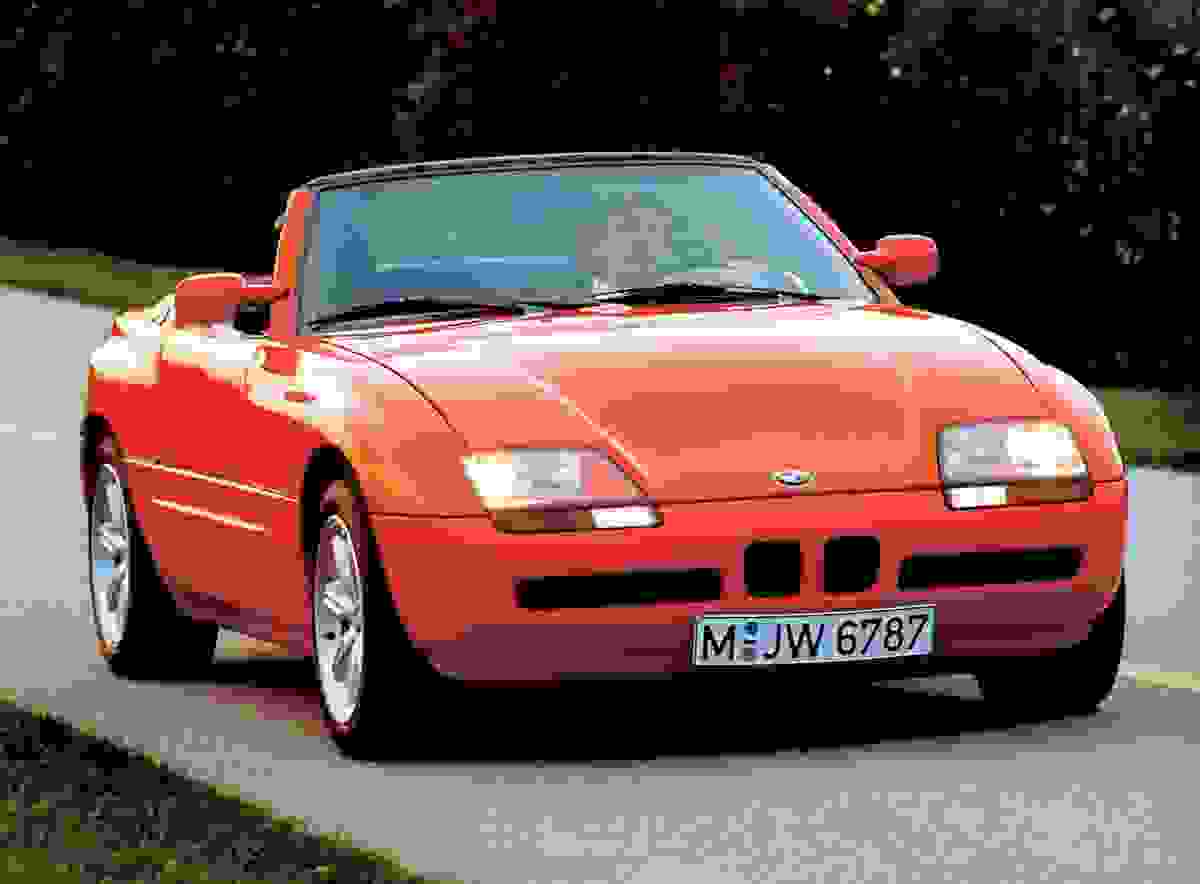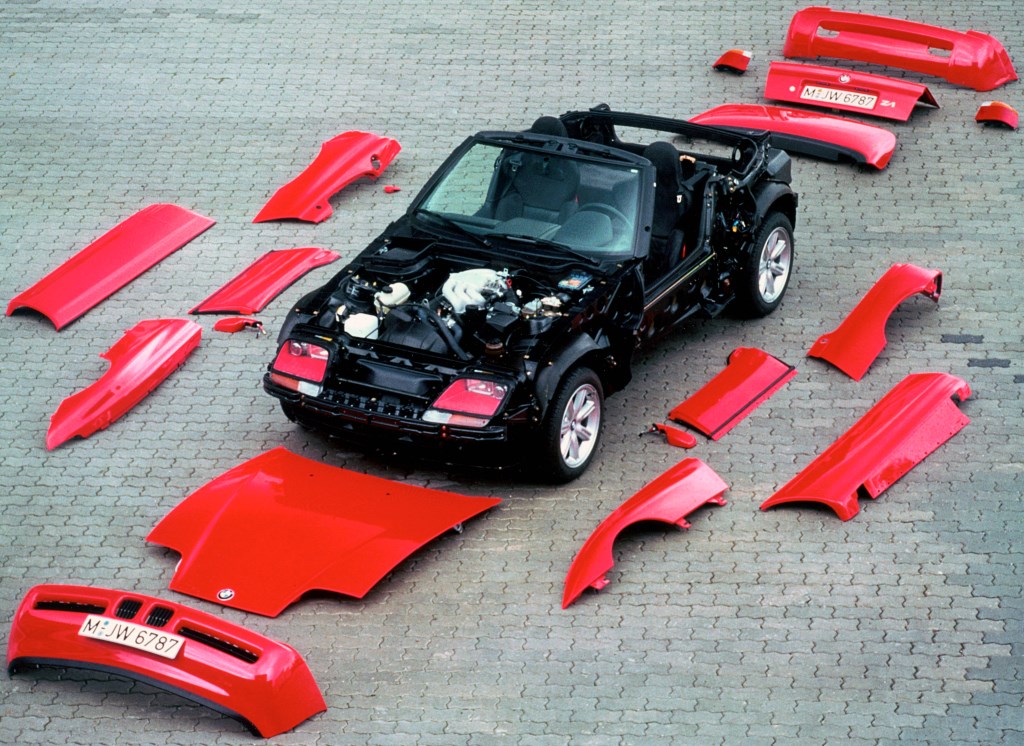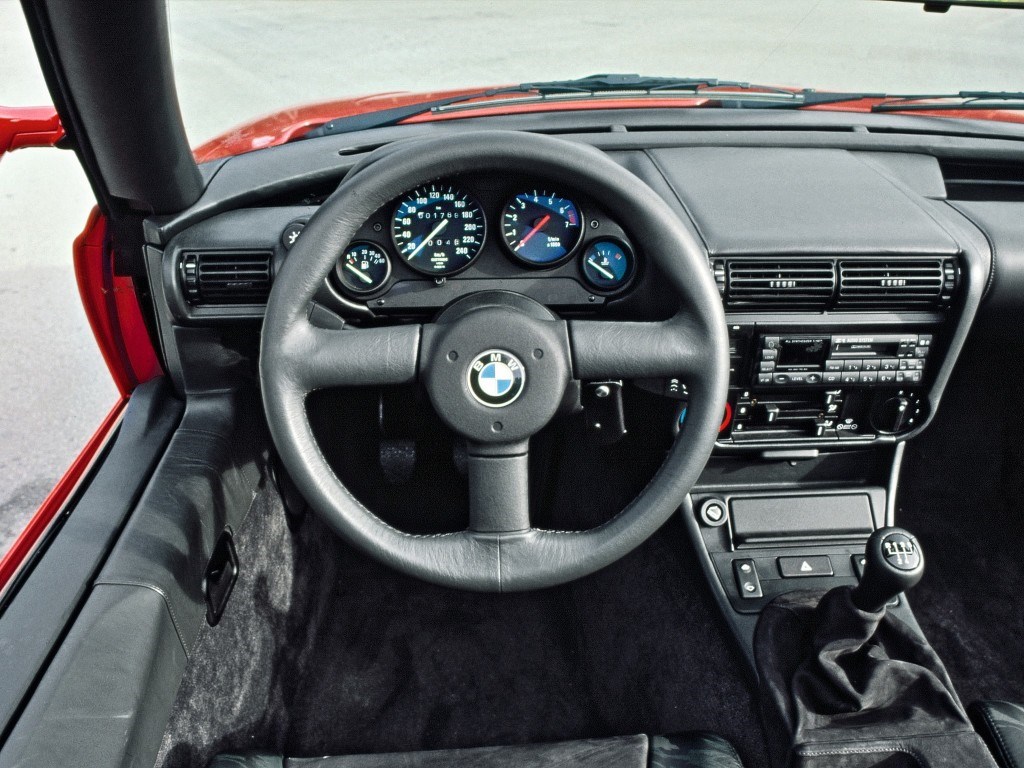
In 1989, BMW surprised everyone with the Z1, a convertible that looked like a concept car compared to the marques much more traditional models.
1986 marked the public debut of the BMW Z1, the first work of BMW Technik, a small department of around a hundred people whose aim was to set new trends. It was a major event at the time, as the brand had not sold a roadster since the 507, of which only 254 were built between 1955 and 1959.
BMW Technik was given carte blanche to create something futuristic and original with the bodywork, and the results certainly didn't disappoint. The angular lines and front-end treatment was like nothing ever seen on a BMW up to this point. The Z in the name stands for 'Zukunft', which means future in German.
When it came to the mechanicals, the relatively safe decision was made to use a front-engined/rear-drive layout. This allowed the use of proven underpinnings from the E30 3 Series sedan.

Traditional Running Gear Wrapped in Innovative Design
The inspiration for the car came from the roadsters of the first part of the 20th century with removable canvas doors. However, the idea was quickly forgotten because it wasn't practical or very safe.
The crazy idea of designing retractable doors then arose. It was decided that the body panels would be made of plastic (by General Electric Plastics in the USA) and would rest on a galvanised steel monocoque chassis built by Baur. To complete the package, the Z1 would be fitted with underbody protection, helping it achieve a very attractive drag coefficient.
The powertrain, however, was of a more proven and traditional nature. The 170bhp 2.5-litre inline six from the E30 325i was used, along with the rest of the running gear. Performance was adequate rather than impressive, with a 0-100km/h time of around 8.5-seconds.

Middling Success
Series production of the Z1 began at the end of 1988, with the first cars being delivered in 1989. While the car was beautiful and its performance good enough to match most rivals, its innovative doors could make it tricky to get in and out of when the soft top was in place. This made it less than ideal for daily use, but less of an issue for occasional weekend blasts.
Even so, sales figures exceeded the expectations of BMW's management, who had originally planned to produce just 5,000 examples. In the end, 8,000 Z1s were produced by the end of 1991. Four years later, the Bavarian firm gave birth to another Z model, the Z3, which had retro-inspired bodywork and did without those interesting drop-down doors.

An Appreciating Modern Classic
Rare and sought-after, the Z1 has seen its price soar in recent years. Today, you can expect to pay between €40,000 and €70,000 for one in good condition. While the powertrain, derived from the E30, is simple and reliable, the bodywork requires a bit more attention: the doors, for example, require skilled labour to adjust them, and the drive belts have to be replaced every 7 years.
Those innovative body panels tend to age badly in the sunlight and can crack over time. They can be refurbished by BMW Classic, but the prices charged are painful! Finally, as with any convertible, the upholstery tends to look tired if the car hasn't been well cared for. Aside from these issues, the Z1 remains an enjoyable classic that can be used and enjoyed regularly.





















